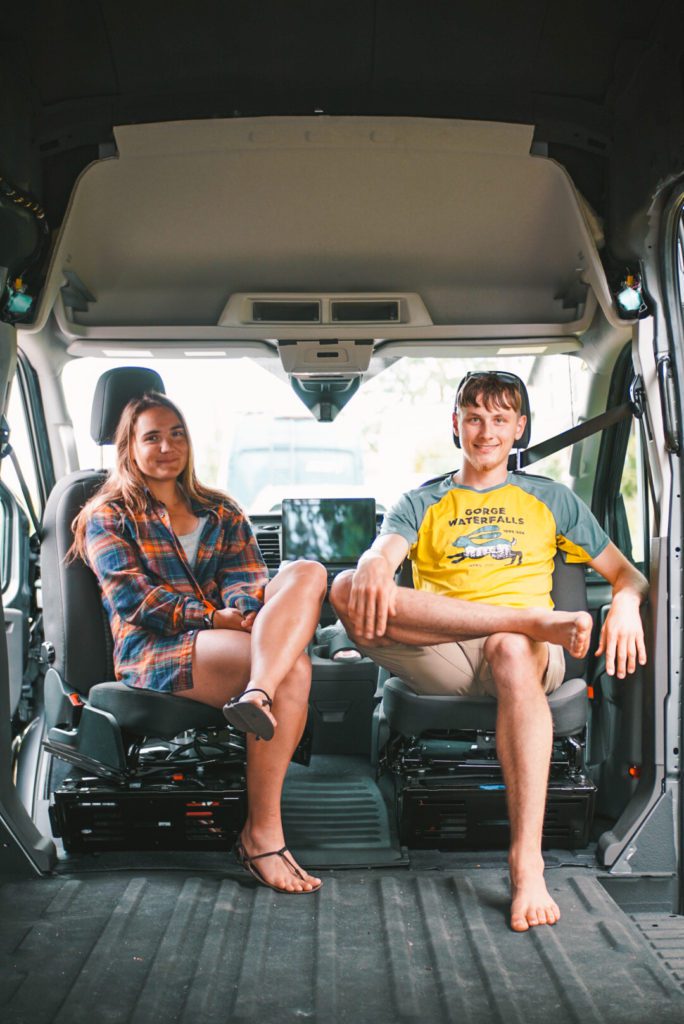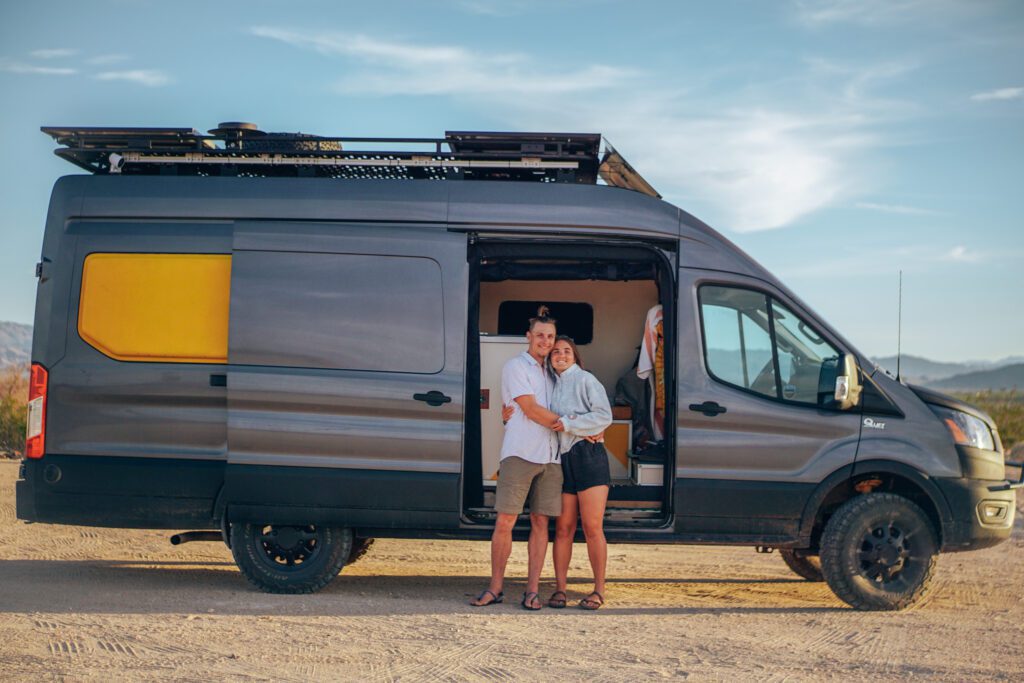Campervan Lighting Options Breakdown
Campervan lighting is just another one of those million decisions that you will need to make during the process of your van build. To make it easier for you, we will share the three most common types of lighting we see in campervans and considerations to be aware of. These lightning types include:
For all of these options, you MUST be looking at 12V lights and switches. You absolutely do not want to be running your inverter to turn on lights. If you have a 24V system, simply have a step down to 12V.
We also suggest reading our Beginners Guide to Campervan Electrical Systems.
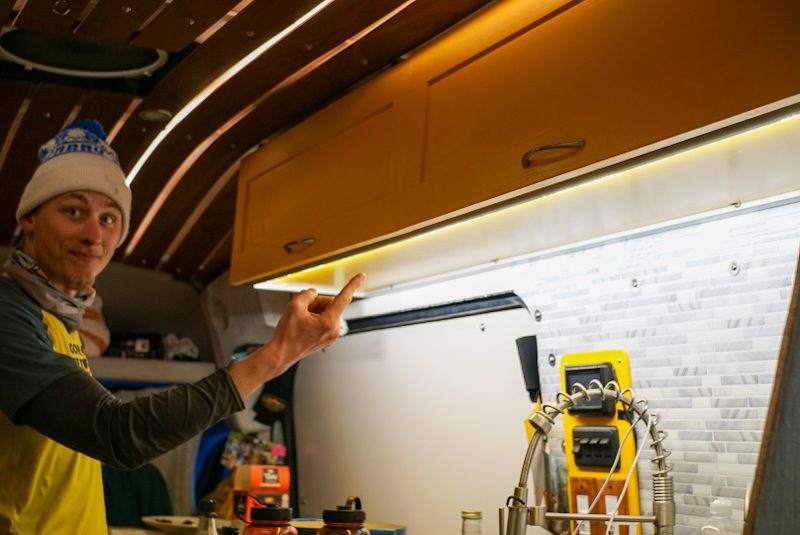
Disclaimer: This blog post contains affiliate links that provide a small kickback to us at no additional cost to you. Thank you for your support!
12V Recessed Puck Lights
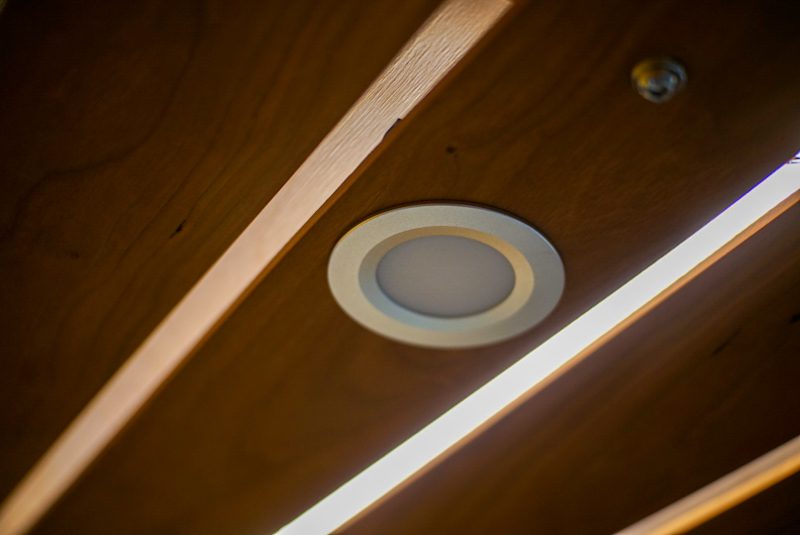
12V recessed puck lights are one of the most popular choices for van life. This is for good reason as they are easy to install, provide comfortable light, and have a relatively low power draw. These come in both warm and cool lighting, and multiple finishes. We have silver finish with warm light.
Power Draw
Each individual puck light draws 3 Watts at full brightness. We will address dimmer switches at the end.
How many do you need for your campervan?
From our personal experience, we recommend airing on the side of more lighting than not enough. Nothing is worse than finishing your van build and having your house be too dark.
4 per zoned light switch works well! Or 6-10 depending on the size of your van. We have 8 (two dimmable zones of 4 each) for our 14 foot living space.
How to install
Puck lights have a very easy install. You simply need a 60mm ( ~2-3/8″) hole saw. Pre-wire your lights, drill a hole, and insert the puck light with the “snap in place” arms.
12V LED Strip Lights
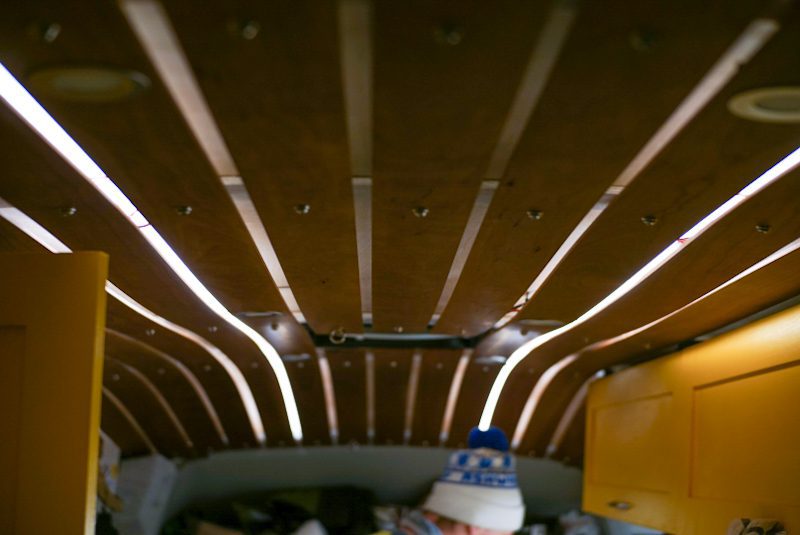
12V LED strip lights add a special *ambience* to your rig. We personally love them for nighttime lighting as they are a bit less harsh and the light spreads out more. Additionally, we lined them on the extruded aluminum under our cabinets for extra bright kitchen lighting (see first photo). Under cabinets and inside ceiling slats are the two most common locations for these.
Power Draw
12V LED strip lights tend to have a higher draw than recessed puck lights. Ours actual draw 4.3 Watts per foot, but we were able to find a different brand while researching that draw 2.4 watts per foot.
Because of this higher power draw, it is a good idea to have them on a 12v dimmer.
How to install
Easy! LED strip lights mount with an adhesive backing and can be cut to fit your space. Be sure to read the regulations on where you can cut them.
Shop 12V LED Strip Lights
12V USB Gooseneck Reading Lights
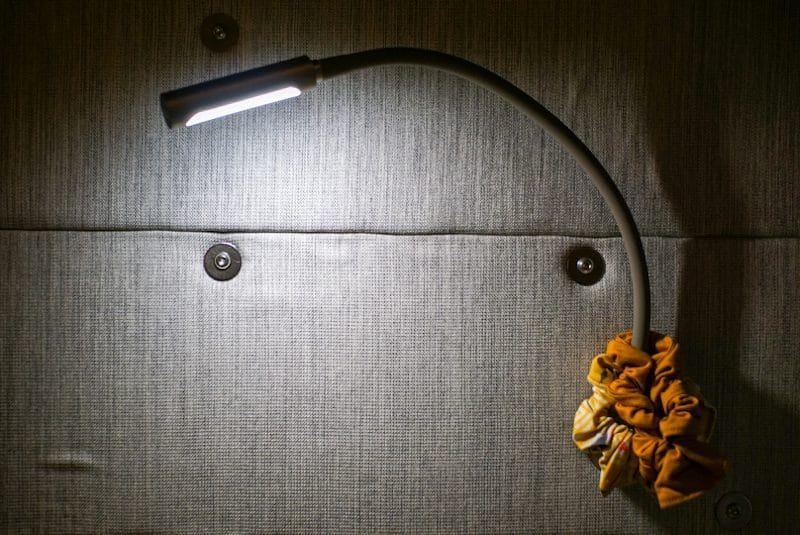
12V Goose neck reading lights are a bit of a *bonus* but we have had these in both of our rigs. We love them for night time. Additionally, the ones we have also allow USB charging which is how we charge our phones every night.
Power Draw
On the highest of the 4 settings, these gooseneck lights draw ~3 Watts. Plus of course, whatever USB device you are charging if you do so 😉
How to install
These USB gooseneck reading lights come with a mounting plate that screws in easily and then a set screw to add the light to the mounting plate.
Van Life Considerations for Campervan Lighting
Power draw and aesthetics are two of the main deciding factors when choosing campervan lighting. However, thought must also be given to what type of lighting you choose and how to control that light.
K Scale: Cool vs Warm vs Daylight for Van Life
Science break. As you being to research campervan lighting options, you are going to see a number on them somewhere between 2000K to 6500K. This number is on the “k scale” and essentially is the color temperature measured in Kelvin. Instead of diving too deep, we will extract what you need to know about this scale and choosing the right lighting.
- WARM LIGHT: (about 2000k-3000k on the K scale). This is assigned to light that is warm, inviting, and more yellow-ish / white. Often this is the color of the light of a bedside lamp.
- COOL LIGHT: (about 3100K to 4500K on the K scale). This is a brighter white, sometimes even with a slight blue tint. Often, cool light is what is used in bathrooms.
- DAY LIGHT: (above 4600K on the K scale). This is a very blue and white light that is meant to be as close to actual daylight as possible. Often this is used in things like garages and basements that lack actual sunlight.
To bring this back to van life, we used cool light in our first rig, but then opted for warm light in our second rig. We felt the cool light was too “sterile” and were looking for a cozier vibe!
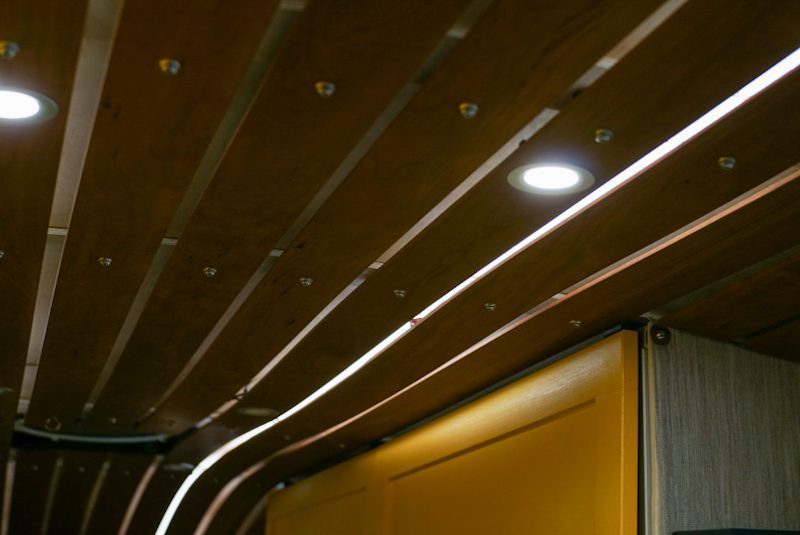
Dimmer Switch vs Standard Switch
Standard switches are the typical on/off switches that you see in most homes. The only thing to know here is that you must purchase a 12V switch.
Dimmer switches uplevel your lighting game in two ways specific to van life. First, you can control the amount of light you have in your van at different times of the day. And second, you can tune how much power you are using! If you don’t need the full brightness- why was the power, right?
Thought dimmer switches are the way to go in our opinion, 12v dimmer switches, especially dual, are extremely hard to find. We will drop the results of our scouring the web below:
- 12V Dual Dimmer (standard look)
- 12V Single Dimmer (recessed mount, stainless steel)
- 12V Single Dimmer (with face plate)
- 12V Standard Rocker Switch (single)
- 12V Rocker Switch Panel (4 gang with lights)

Campervan Lighting Options Summary
If you can tell from the photos, we have a combination of all of the lighting options above. It works great for us as full time engineers on the road!
Let us know if you have any additional questions, suggestions, or comments below.
Thanks for being here! Happy building!
Eric + Colby
✉️ Join our mailing list for more content!
🙏🏽 If you are looking for more 1:1 van build help, we are here to help via Consulting or Travel Van Building.
[Start Here] Beginner Guides:
